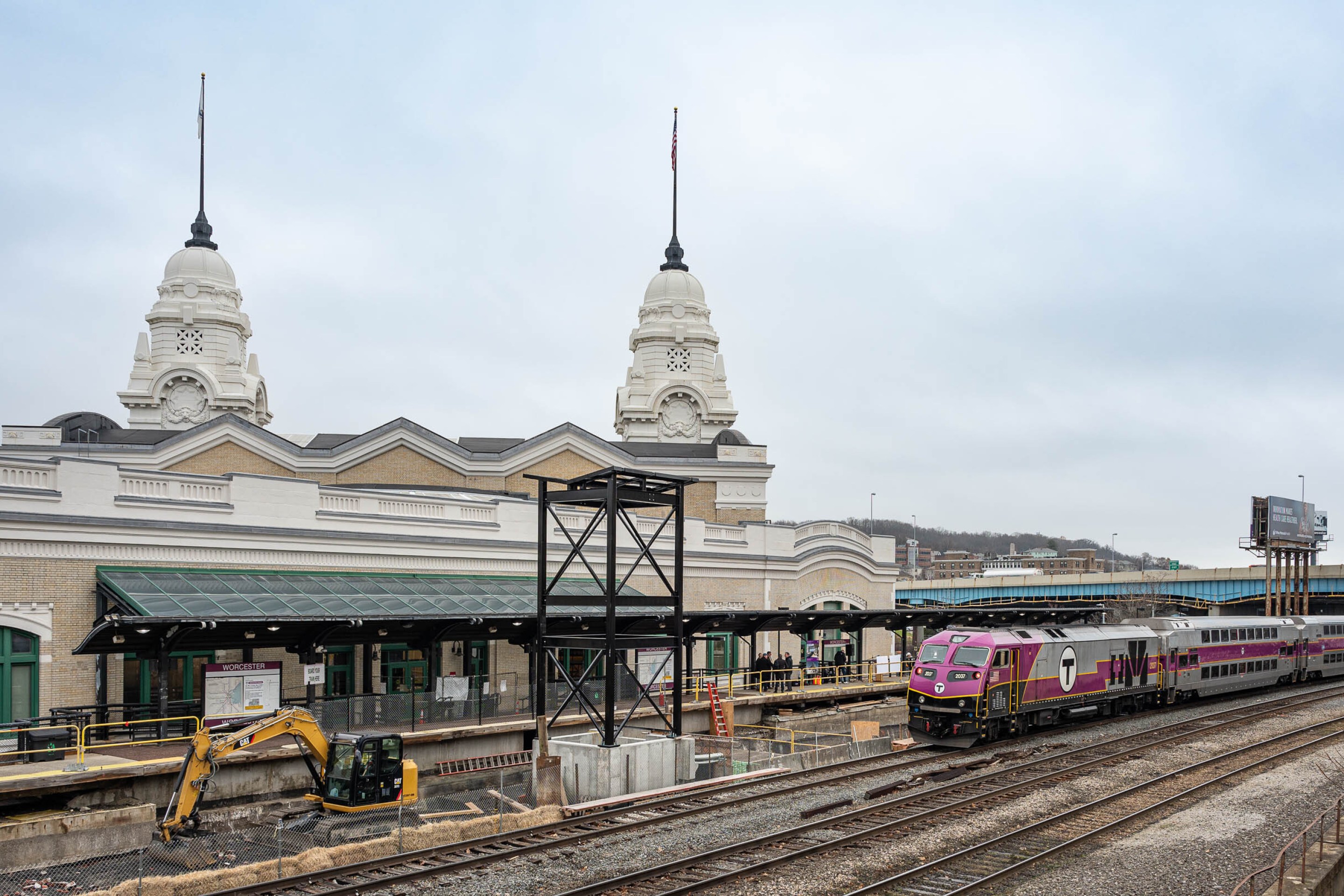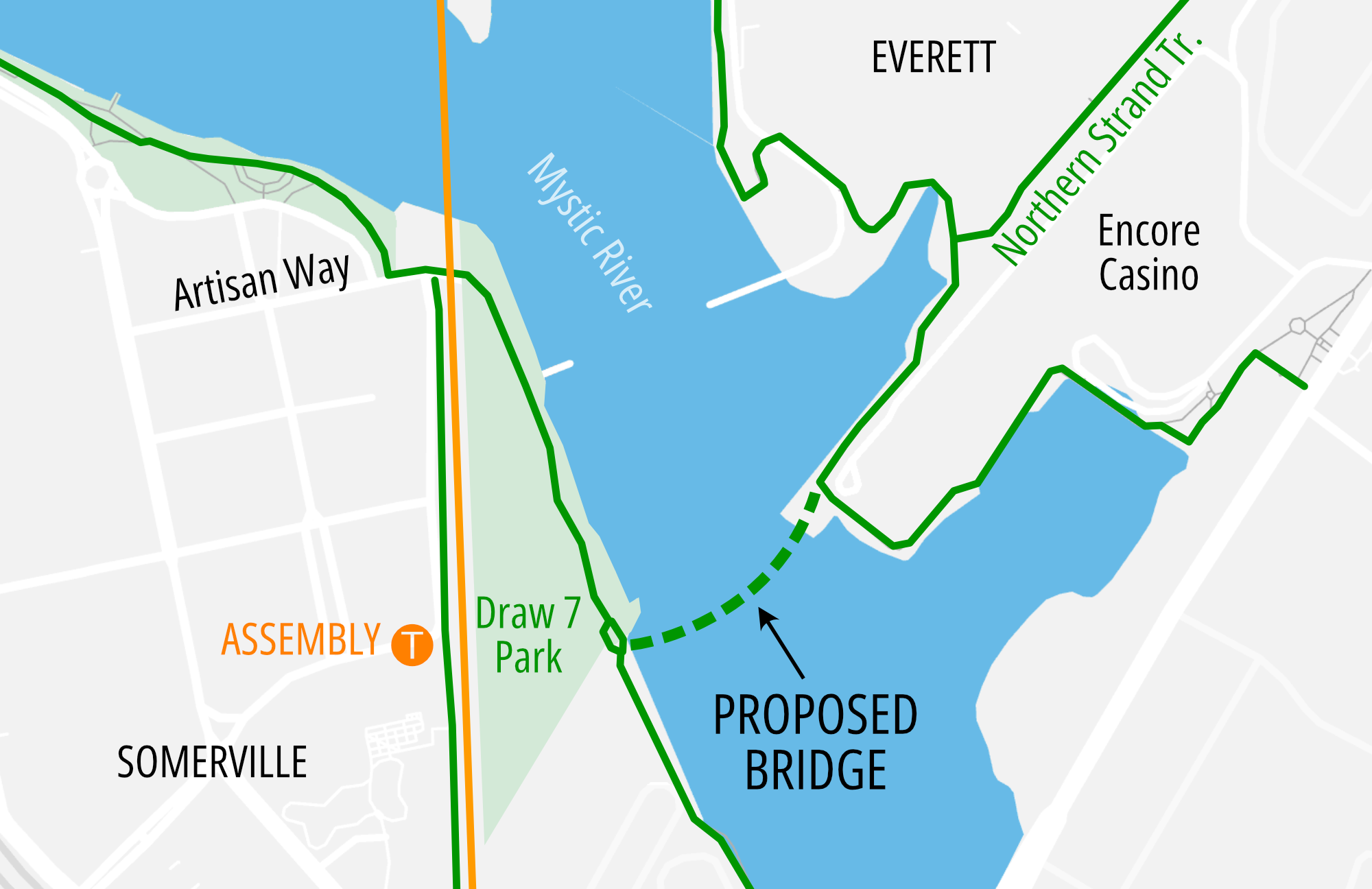A Public Meeting at a Bus Stop: T Solicits Riders’ Input for Bus Network Redesign in Chelsea
2:27 PM EDT on May 31, 2022
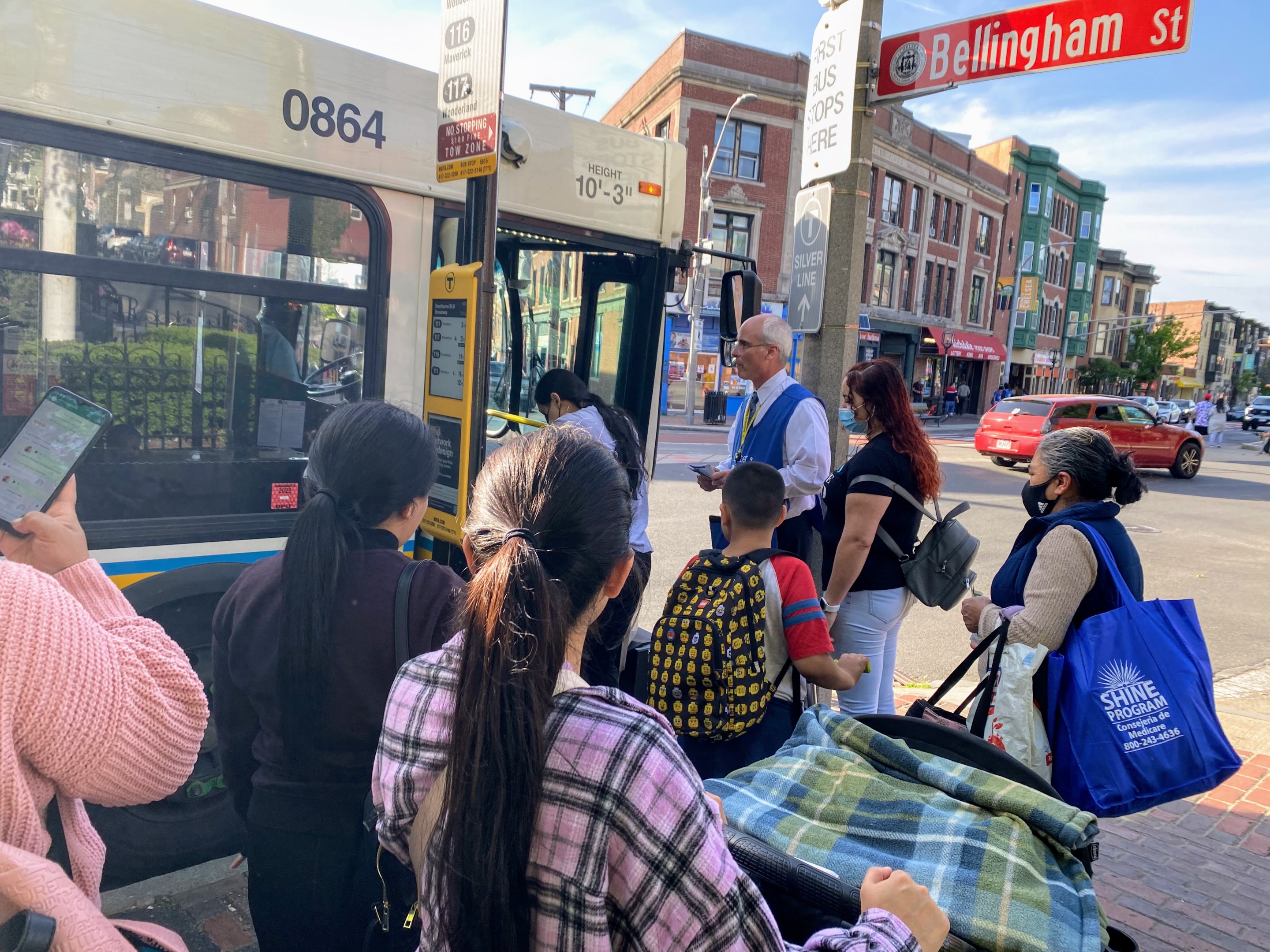
Riders and an MBTA outreach worker wait to board a bus in Chelsea in May 2022.
MBTA representatives are leaving their Powerpoint presentations behind and hitting the streets to speak directly with riders about proposed bus route changes.
Last week, I made my way to one of the outreach events scheduled in Chelsea for what I thought would be a standard public meeting at City Hall with MBTA staff presenting details about the project.
As I got off the bus on Park Street, I asked Sergio, a fellow 111 rider, about his thoughts on the current bus system. He responded in Spanish, “It’s a little complicated because there’s a lot of people and few buses. For example, from 5 to 7 or 8 am, it’s very complicated.”
Lea este articulo en español:
As I made my way toward City Hall, I spotted about five MBTA outreach workers outside and realized this was actually a less formal outreach event. No Powerpoint presentation, just outreach workers decked out in blue "better bus" branded vests with pockets filled with flyers.
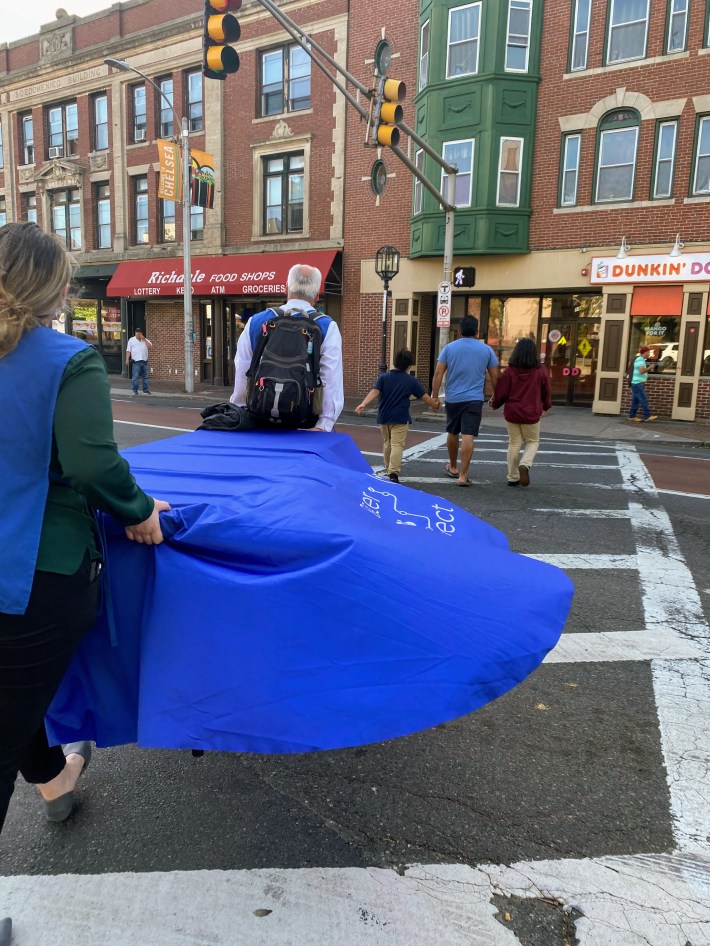
Noticing the low foot traffic, the team quickly made a decision to pack everything up and walk the table and supplies across the street to one of the nearby bus stops where a constant stream of riders could be seen waiting for their bus.
After the supplies were moved, it was all hands on deck. Some workers stayed by the table to talk to riders walking by, while others scattered to the busy bus stop across the street where many riders waited to catch the 111, 112, 114, 116 or 117.
Talking to people on the street can sometimes be intimidating or awkward, but the T’s workers didn’t hesitate to jump right in.
As buses pulled up to the busy bus hub, one member of the T’s crew would quickly jump on board, explain what was going on to the driver, then go on to explain as many details as possible about the project to the passengers on board before jumping off and repeating the process on the next bus.
Many people we approached didn’t speak English, and only one MBTA representative at the event was a native Spanish speaker, but staff had Spanish flyers handy and ready to give out.
One of the T’s representatives broke out her Spanish skills and later shared with the rest of us how happy she was when after explaining the project as best she could, one of the riders responded with a “gracias”.
The majority of the people we spoke with shared they had not heard of the project. I asked one outreach worker why there weren’t any signs promoting the project inside the bus. He responded reassuringly, “Oh, they’re being printed right now and will be here next week!”
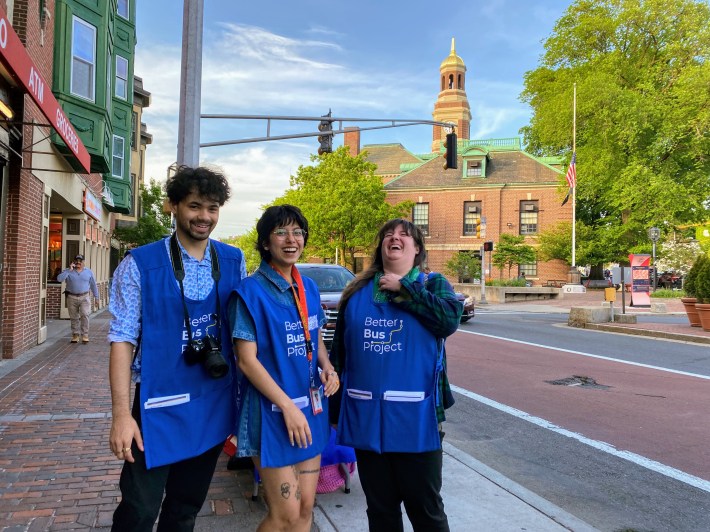
I asked Miriam, a woman waiting for the bus accompanied by two young girls, how she usually kept up with any service changes.
“Honestly, I just go and stand at the stop, I don’t keep up with whether something changed or not. I get here and I stand and wait,” she answered in Spanish. “The only lines that are kind of bad are the 116 and the 117 because those buses are very late. They take over half an hour over the time they’re supposed to come and usually right now with the pandemic they’re full. They’re too packed. I feel that’s where the transportation isn’t right.”
“I usually just take the bus. I’ve never had a problem," said Keda, another rider. "The 111 comes all the time, sometimes 16 (116), 17 (117) is a little slow but most of the time they’re on time. Never had a problem.”
Another rider, David, disagreed. “The 117 and 116 come too late. I can go to work on all these buses, but I can never use 116 or 117 to cross to the other side,” he said in Spanish.
The T’s draft bus network redesign proposal calls for consolidating the 114, 116 and 117 into a new “high-frequency” route, the T116.
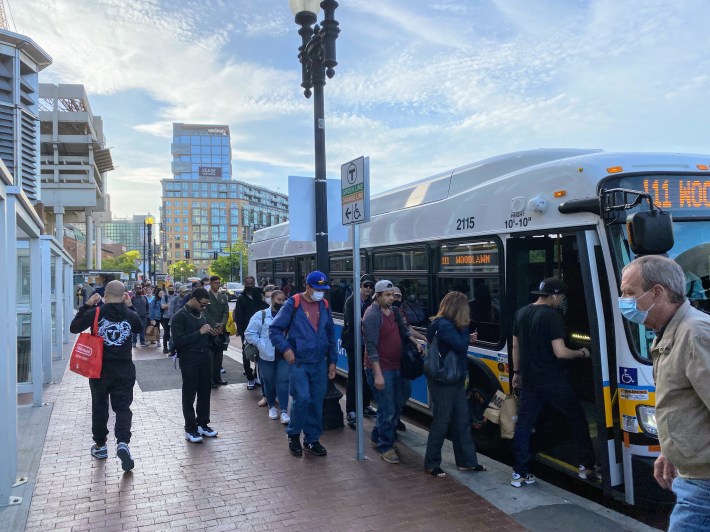
While chatting with two riders, Julissa and Esmeralda, outreach workers had a frank conversation about the upcoming changes and even some of the internal challenges the agency is currently facing.
MBTA representatives explained how even though the proposal calls for the 114 to be removed, this means the 116 will now come more frequently. Esmeralda responded, “Okay, because I waited like twenty minutes for the 116 this morning. Are there less buses right now?”
The MBTA representative took a deep breath and explained, “Well, there's less drivers right now- that's our problem. Nationwide, whether it's buses or freight, they're all saying, ‘forget it.’ So now we have buses with no drivers which is a really rare thing. We’re trying to pay more. We’re trying to get people in the door.“
When the bus network redesign proposal became public two weeks ago, a T spokesperson told StreetsblogMASS that the agency had hired 180 new bus drivers in the past 10 months (as of May 16).
But in the same period, 173 bus drivers left the agency. The resulting net gain - just 7 more drivers - isn’t enough to fill the agency’s current shortage of drivers, much less provide the 25 percent increase in bus service that the bus network redesign proposes.
Esmeralda followed up with, “When are the changes gonna be made?”
The staff person responded, “They’re not going to be made if people don't like them. If people like them, and we don't get too much negative feedback, then they’ll happen. But they're not going to happen unless we get good feedback.”
Our conversation was cut short after the two friends spotted their bus and hurried off to catch it.
The bus network redesign online survey is available in nine different languages and will be available until the end of summer.
Christian MilNeil contributed reporting to this article.
Stay in touch
Sign up for our free newsletter



